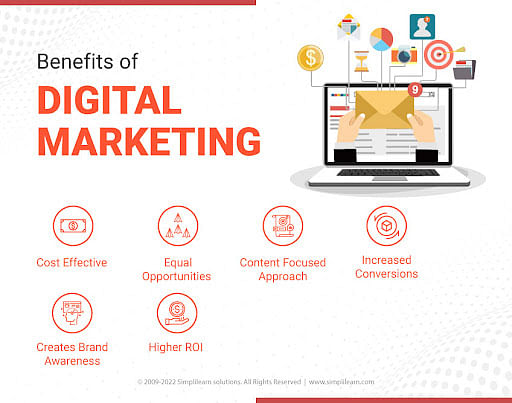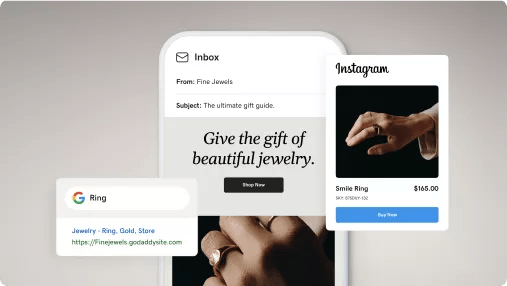Discover the Sparkle of The Ad Firm Carlsbad: Boost Your Digital Presence Today
Wiki Article
Enhance Customer Experience and Drive Website Traffic With Receptive Internet Style
In today's digital landscape, where individuals are accessing sites from a wide variety of devices, receptive internet design has actually ended up being a lot more important than ever. With its ability to adjust and perfectly change to different display sizes, responsive style not just improves individual experience however likewise drives web traffic to your web site. However why is this style strategy so essential? How does it improve customer involvement and rise web site traffic? In this discussion, we will discover the crucial aspects of effective responsive layout, look into the most effective practices for its execution, and reveal the tricks to enhancing customer experience while driving more traffic to your website.Why Responsive Website Design Matters
Receptive website design is an essential facet of modern internet development as a result of its capability to guarantee optimal individual experience across numerous gadgets and screen dimensions. With the expansion of mobile phones, tablets, and various other mobile phones, it has actually come to be important for websites to adjust and offer smooth capability no matter of the device being made use of.The key reason why receptive website design matters is that it permits customers to have a consistent and enjoyable searching experience, no matter the device they are using. A responsive website automatically adjusts its material, format, and style components to fit the screen dimension and resolution of the device, making certain that individuals can conveniently browse and communicate with the website without any trouble or stress.
Additionally, receptive web style additionally plays a considerable role in search engine optimization (SEARCH ENGINE OPTIMIZATION) Look engines, such as Google, prioritize sites that are responsive and mobile-friendly in their search results page. By incorporating receptive design concepts, web sites can enhance their visibility and ranking, leading to enhanced natural website traffic and prospective customers.

Boosting Customer Interaction With Responsive Layout
Maximizing customer engagement is a key goal of receptive design, as it makes sure that customers can quickly access and engage with site web content on any device. With the increasing use of smart devices and tablet computers, it is crucial for web sites to adapt to various screen sizes and resolutions. Responsive layout allows websites to instantly readjust their design and material to supply a seamless individual experience across gadgets.One of the primary methods responsive layout increases user interaction is by decreasing load times. With a responsive website, customers do not need to wait on separate mobile versions to load, leading to quicker access to web content. This enhanced speed causes higher individual fulfillment and encourages them to invest even more time on the site.
Furthermore, responsive design enhances customer engagement by boosting navigating and customer interface (The Ad Firm Carlsbad). When a site is made responsively, food selections and buttons are optimized for touch interactions, making it simpler for individuals to interact and navigate with the site on their mobile gadgets. This straightforward and user-friendly experience keeps customers involved and motivates them to discover more of the website
Furthermore, receptive design permits better content presence and readability. By adapting the format and font dimensions to different tools, receptive internet sites make sure that individuals can quickly check out and understand the web content. This improves user engagement by decreasing the requirement for zooming or scrolling to check out the text.
Boosting Web Site Web Traffic With Responsive Web Style
With the expanding appeal of smart phones, having a web site that is receptive to various screen sizes and resolutions is necessary for driving increased web traffic. In today's electronic landscape, users are accessing internet sites from a selection of gadgets such as smart devices, tablet computers, and desktop. Each of these devices has various display sizes and resolutions, and if your internet site is not made to adjust to these variants, it can result in an inadequate individual experience and a loss of prospective website traffic.
Responsive website design guarantees that your web site looks and functions optimally across all devices. By utilizing adaptable grids, liquid photos, and media inquiries, responsive style allows your internet site to immediately adjust its navigating, material, and layout to fit any kind of display size. This implies that individuals will have a smooth browsing experience despite whether they are utilizing a tiny mobile phone or a big desktop computer computer system.
Crucial Element of Reliable Responsive Design
Efficient receptive style includes several vital elements that ensure a seamless user experience throughout different tools. This enables content to be presented in a understandable and visually appealing manner on any kind of device.Another vital aspect is media queries. These enable developers to apply various styles and formats based on the features of the customer's device, such as display dimension and orientation. By utilizing media queries, developers can optimize the discussion of content for every tool, making certain that it is quickly accessible and understandable.
Receptive photos are additionally important in reliable receptive layout. Photos that are also big can reduce web page load times on mobile tools, while photos that are as well small may appear pixelated on bigger displays. By utilizing techniques such as responsive image resizing and lazy loading, developers can ensure that pictures are properly sized and enhanced for each gadget.
Finally, effective responsive layout includes a mobile-first strategy. This suggests focusing on and making content for mobile devices initially, and afterwards improving the style and expanding for from this source bigger displays. This technique makes sure that the most essential material is easily obtainable on smaller sized screens, a knockout post while still offering an abundant experience on larger tools.
Finest Practices for Implementing Receptive Website Design
Carrying out responsive website design calls for careful factor to consider of various ideal practices to make certain an ideal user experience across various devices. When executing receptive web style., here are some crucial finest techniques to comply with.To start with, it is vital to prioritize mobile individuals. With the raising supremacy of smart phones, designing for mobile-first has come to be important. Begin deliberately for smaller sized displays and after that gradually boost the layout for larger screens.

One more vital ideal technique is to optimize images for various screen resolutions. Big images can decrease the loading time of your site, particularly on mobile devices with slower links. Use receptive images that can be resized based upon the device's display resolution to improve performance.
In addition, test your internet site on different tools and screen sizes to ensure a regular and seamless experience. There are various screening tools available that can help you recognize any type of issues and make necessary adjustments.
Finally, prioritize functionality and accessibility. Ensure that your website is easy to navigate, with clear and concise material. portfolio website design Ensure that your website is available to people with specials needs and follows availability guidelines.
Conclusion
In final thought, receptive web layout plays a critical function in enhancing customer experience and driving web traffic to websites. By embracing responsive layout principles, internet sites can make sure optimal viewing experiences throughout various devices, leading to increased individual interaction.Optimizing customer involvement is an essential goal of receptive design, as it makes certain that customers can quickly accessibility and engage with website web content on any kind of gadget. Responsive design allows websites to instantly change their layout and content to give a smooth individual experience throughout gadgets.
In addition, responsive style boosts user interaction by boosting navigation and individual interface.Receptive images are likewise important in reliable responsive style. By adopting responsive style principles, internet sites can make sure ideal viewing experiences throughout various devices, leading to raised individual interaction.
Report this wiki page